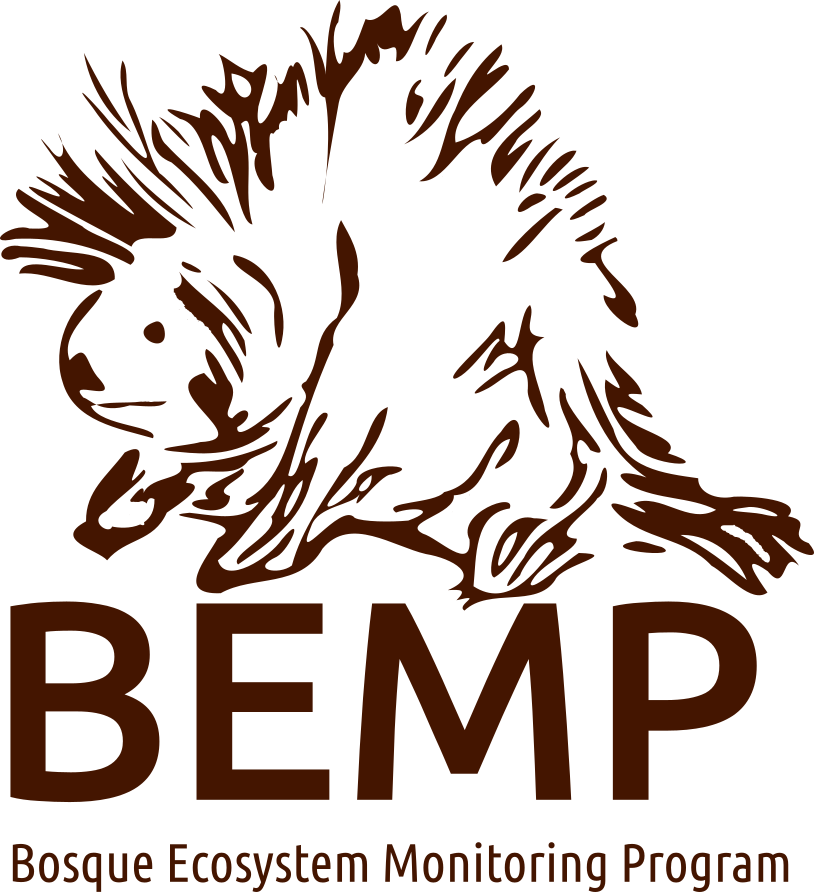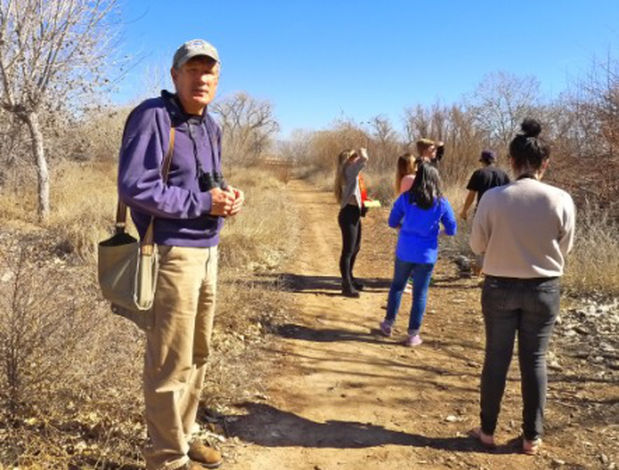This is an article from March 24th, 2015 in the Bosque Beast Magazine, which has sadly ceased publication. We thought we’d re-post it here on our blog. Enjoy!
A science teacher takes an unusual approach to calling out future scientists
Remember that cool biology teacher you had in middle school, Mr. What’s-his-name? Or maybe it was the poli-sci teacher—two of the only male role models in school. Stern father figures who brooked no crap, they nevertheless had a wry, dry sense of humor, so rare among adults, that made everyone like them.
Dan Shaw is that teacher at Bosque School. Today he has his advanced wildlife class out by the river behind the private school in northwest Albuquerque, taking part in the Great Backyard Bird Count, a nationwide citizen science project. But birds in binoculars are hardly the extent of fieldwork in Dan Shaw’s science classes. In fact, Shaw runs a program that is unparalleled in New Mexico for getting thousands of students of all ages into the field collecting real data—information that is used by government agencies in multi-million-dollar projects.
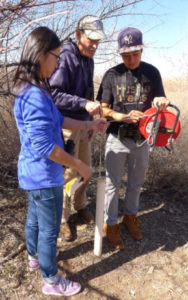
The Bosque Ecosystem Monitoring Program (BEMP) was the brainchild of the late Cliff Crawford, a biologist at the University of New Mexico known as the “dean of bosque science.” He envisioned putting citizen volunteers to work collecting the data that was needed to track the ecological health of the Rio Grande riparian zone. It was Shaw, however— then a new teacher at Bosque School— who brought in the kids.
Beginning with his 6th-grade class in the 1996-97 school year, Shaw tested the ability of middle-schoolers to do things like measure the depth to groundwater, gauge rainfall, and collect leaves and arthropods (bugs) at strategically located traps. Th e program has grown over two decades to encompass 10,000 students from schools across New Mexico, from Ohkay Owingeh Pueblo in the north to Mesilla Valley in the south.
Run jointly with UNM, and directed by both Shaw and professor Kim Eichhorst, who trains university students to oversee the younger kids and analyze their data, BEMP regularly monitors 30 sites along 350 miles of the Rio Grande. The information collected is not only used by government agencies, but requested by them under contract for specific projects. Contracting school kids to do government work is pretty cool. But the part of BEMP that really puts the gleam in Dan Shaw’s eye is what it has done for the kids. The educational mission of BEMP is to teach students how to use the tools of science to answer their own questions.
Shaw offers the beaver project as an example. A 6th-grader came up with a simple chicken-wire wrapping designed to protect cottonwood trees, so beavers would not have to be killed for gnawing on them. Th is successful project was later monitored and expanded upon by three students who all went on to become biologists, Shaw notes—and has now been adopted by another generation of 6th-graders who are continuing to test its effectiveness.
“The goal is to do meaningful science outside the classroom that is related to their environment,” Shaw says, adding that about a thousand students in BEMP return to the same monitoring sites all year, so they develop a sense of stewardship. Most students in BEMP belong to groups underrepresented in the sciences, “and for many it will be the only science experience they will have all year,” Shaw says. It’s not only art and music, in other words, that have been sacrificed to the god of state testing.
The vast majority of students participating in BEMP also come from outside the privileged community of Bosque School, and to them Shaw feels a special responsibility. “These kids—this is their planet,” he says, pausing to quiz his students on the raptor that just passed overhead. Humanity faces changes not seen on this planet over the last two millennia. “It’s crucial to understand what these folks will experience in the next 20 or 30 years,” Shaw says, indicating the teens scribbling in their notebooks. “The need for clean water, clean air, food—that is the real value on this planet,” not what’s trading on the stock market. “You can’t put a price on depleted oxygen stores.”
Students have varying degrees of susceptibility to this kind of talk, of course. Not all of them take to tramping around the woods with their clipboards, and their exposure to Shaw and BEMP will vary by age and school involvement. For some, it might be a yearlong AP science class. For others, it is just a field trip to do some monitoring. But for a handful of students each year, Shaw is the mentor who guides them to their life path.
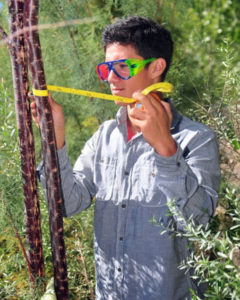
Katie Elder is one of those acolytes. She thought she’d end up a doctor, like her mother. But when she started with BEMP in Shaw’s 6th-grade class, she realized she loved “using cool gadgets and getting out into nature.” In Shaw’s advanced wildlife class in high school, she experimented with a more humane method for tranquilizing porcupines—a project she is still working on as a college graduate and “can’t get enough of.” Elder went on to Humboldt State University and majored in biology and wildlife conservation, and returned each summer to intern with BEMP. Now she is looking at graduate school and a future as a wildlife researcher.
Elder says she knows a fair number of other students who “grew up with BEMP” and were mentored by Shaw into science careers. “He’s responsible for getting so many people interested in the natural world, even if they don’t get into wildlife biology,” she said. “He holds you to your work and wants you to succeed, but also he has this kind of humor—I guess it’s dry—that gets people excited somehow, even though it’s not in-your-face kind of humor. Everybody loves him.”
BEMP is now a program involving only students; the senior and other citizen scientists have been phased out. And over the last 18 years, government agencies contracting with the program have expanded to include most of the local, state, and federal departments that touch the bosque, says co-director Eichhorst of UNM, who handles agency contracts, data analysis, and project deliverables.
Initially, says Eichhorst, the agencies were leery of using data collected by students. It took about five years to prove that “kids can collect valid data.” It was after they started seeing close correlations between survey data collected by their professional contractors, and from BEMP’s simple monitoring stations, that they appreciated the potential cost savings to the public.
“Now,” says Eichhorst, “we are often the choice for monitoring the impact of their work.” Not only do the agencies request and use BEMP data, “most of our sites have been put in at the specific request of the agencies.”
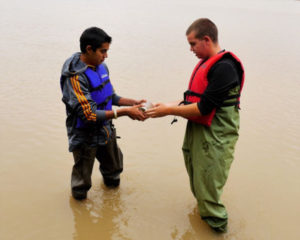
These include the Army Corps of Engineers, Middle Rio Grande Conservancy District, U.S. Bureau of Reclamation, U.S. Fish & Wildlife Service, and Albuquerque Bernalillo County water utility, among others, on projects ranging from restoration of silvery minnow habitat to measuring the impact of fire-recovery projects. In fact, says Eichhorst, BEMP data is used each summer to determine when the bosque can be safely reopened after fire season.
A number of agencies also contract with BEMP to provide environmental education, which is the side of the program that needed no selling, Eichhorst said. “There was a waiting list of teachers right off the bat.” This was also the component that transformed BEMP from a nice citizen-science project to a vital training ground for future wildlife ecologists.
“Dan’s impact is finding the way to make the kids shine,” Eichhorst says. “It’s not just getting them out there, but also how to get them engaged and have them own the activity. That’s such a critical piece of education that is largely missing today.”
Shaw attributes his passion for his students not only to teaching science, but also citizenship—part of which is being scientifically literate. His students went to the legislature to learn “how to engage in the political process in a polite way, with rational dialogue.” Students present the results of their research at scientific conferences, and to educators, as well as to recruit the interest of fellow students.
It’s an educator’s best effort at equipping the next generation to inherit the mess left by ours. “You have to give them hope,” Shaw says. “You have to give them tools.”
